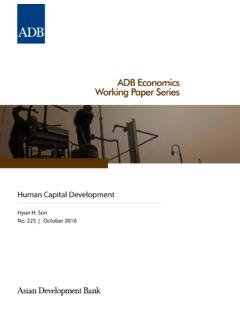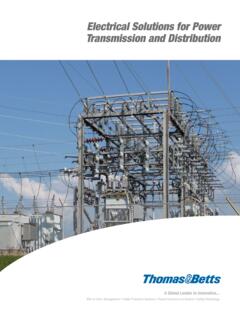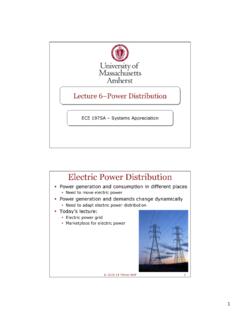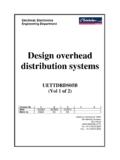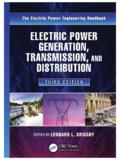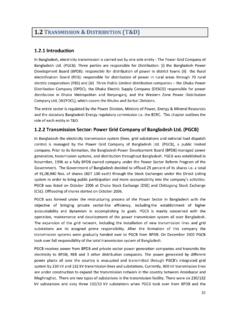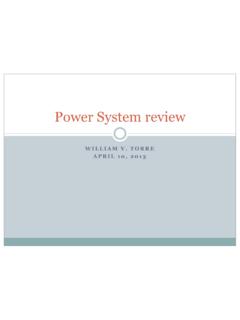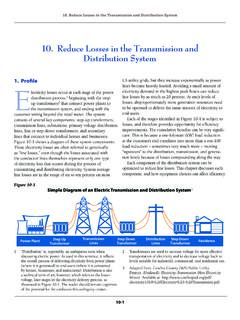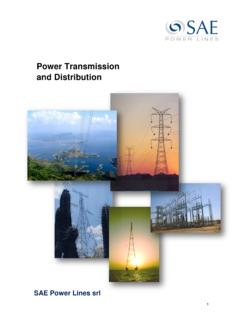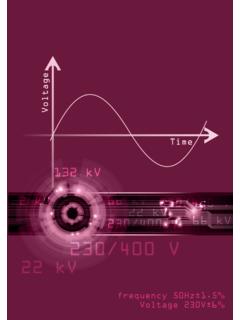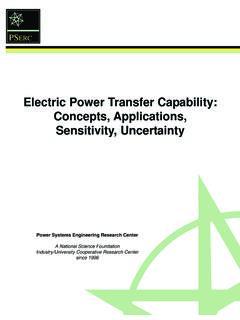Transcription of NEPAL: Power Transmission and Distribution …
1 Power Transmission and Distribution efficiency enhancement project (RRP NEP 50059) project Number: 50059-002 Loan and/or Grant Number(s): {LXXXX; GXXXX; TAXXXX} June 2017 NEPAL: Power Transmission and Distribution efficiency enhancement project project Administration Manual ABBREVIATIONS ADB Asian Development Bank EMP environmental management plan ESSD Environmental and Social Services Department GESI gender equality and social inclusion kV kilovolt MW megawatt NEA Nepal Electricity Authority PMD project Management Directorate SPS Safeguards Policy Statement CONTENTS I.
2 project DESCRIPTION 1 II. IMPLEMENTATION PLANS 4 A. project Readiness Activities 4 B. Overall project Implementation Plan 5 III. project MANAGEMENT ARRANGEMENTS 6 A. project Implementation Organizations: Roles and Responsibilities 6 B. Key Persons Involved in Implementation 6 C. project Organization Structure 7 IV. COSTS AND FINANCING 8 A. Cost Estimates Preparation and Revisions 8 B. Key Assumptions 9 A. Detailed Cost Estimates by Expenditure Category 10 B. Allocation and Withdrawal of Loan/Grant Proceeds 11 C. Detailed Cost Estimates by Financier 12 D. Detailed Cost Estimates by Outputs 13 E.
3 Detailed Cost Estimates by Year 14 F. Contract and Disbursement S-Curve 15 G. Fund Flow Diagram 16 V. FINANCIAL MANAGEMENT 16 A. Financial Management Assessment 16 B. Disbursement 17 C. Accounting 18 D. Auditing and Public Disclosure 18 VI. PROCUREMENT AND CONSULTING SERVICES 19 A. Advance Contracting and Retroactive Financing 19 B. Procurement of Goods, Works, and Consulting Services 20 C. Procurement Plan 21 D. Consultant's Terms of Reference 26 VII. SAFEGUARDS 26 VIII. GENDER AND SOCIAL DIMENSIONS 27 IX. PERFORMANCE MONITORING, EVALUATION, REPORTING, AND COMMUNICATION 30 A.
4 project Design and Monitoring Framework 30 B. Monitoring 33 C. Evaluation 34 D. Reporting 34 E. Stakeholder Communication Strategy 35 X. ANTICORRUPTION POLICY 36 XI. ACCOUNTABILITY MECHANISM 37 XII. RECORD OF CHANGES TO THE project ADMINISTRATION MANUAL 37 project Administration Manual Purpose and Process 1. The project administration manual (PAM) describes the essential administrative and management requirements to implement the project on time, within budget, and in accordance with the policies and procedures of the government and Asian Development Bank (ADB).
5 The PAM should include references to all available templates and instructions either through linkages to relevant URLs or directly incorporated in the PAM. 2. The Nepal Electricity Authority (NEA) is wholly responsible for the implementation of ADB-financed projects, as agreed jointly between the borrower and ADB, and in accordance with the policies and procedures of the government and ADB. ADB staff is responsible for supporting implementation including compliance by NEA of their obligations and responsibilities for project implementation in accordance with ADB s policies and procedures.
6 3. At loan negotiations, the borrower and ADB shall agree to the PAM and ensure consistency with the loan and grant agreements. Such agreement shall be reflected in the minutes of the loan negotiations. In the event of any discrepancy or contradiction between the PAM and the loan and grant agreements, the provisions of the loan and grant agreements shall prevail. 4. After ADB Board approval of the project 's report and recommendations of the President (RRP), changes in implementation arrangements are subject to agreement and approval pursuant to relevant government and ADB administrative procedures (including the project Administration Instructions) and upon such approval, they will be subsequently incorporated in the PAM.
7 I. project DESCRIPTION 1. Rationale. Reliable electricity service is a necessary requirement for accelerating economic development of a country and is also considered an important input in improving quality of life. Energy development in Nepal has been slow largely because of a history of weak and inconsistent policies, absence of an independent electricity regulator, lack of comprehensive planning, public sector financing limits, NEA s credit and offtake risks, and difficulty in land acquisition and Transmission line right-of-way issues.
8 Nepal s overall electricity demand has far outgrown the supply: estimated peak demand in FY2016 was around 1,385 megawatt (MW) versus installed capacity of 835 MW, resulting in a deficit of about 550 MW. As a consequence, Nepal has been suffering from a severe shortage of Power with frequent load shedding. The quality of electricity supply in Nepal is among the poorest in the world, ranking 137th out of 147 2. As a government corporation responsible for generation, Transmission and Distribution , NEA has dominated Nepal s electricity subsector.
9 It has recorded poor operational and financial performance, and at the end of FY2015, its accumulated losses reached billion. In FY2015 alone, NEA incurred losses of The financial position of NEA is further deteriorating due to a number of factors such as (i) lack of cost-based tariff adjustments; (ii) high cost of service arising from an elevated internal purchase price at generation point, the annual escalation of costs in purchasing Power from independent producers, operation of thermal plants, import of relatively high-cost seasonal energy from India, and increased operation and maintenance costs; (iii) high system losses at over 24%.
10 And (iv) increased arrears largely from the public sector, including municipalities. 3. The Government of Nepal endorsed an action plan in February 2016 to end the energy crisis within 2 years. The Ministry of Energy prepared a concrete action plan to reduce Power shortages within 1 year and eliminate them altogether within 2 years. The government has also declared the National Energy Crisis Reduction and Electricity Development Decades, an action plan comprising 99 specific activities that are relevant to sector operations including that of improving the service delivery by modernizing the electricity Distribution system.









